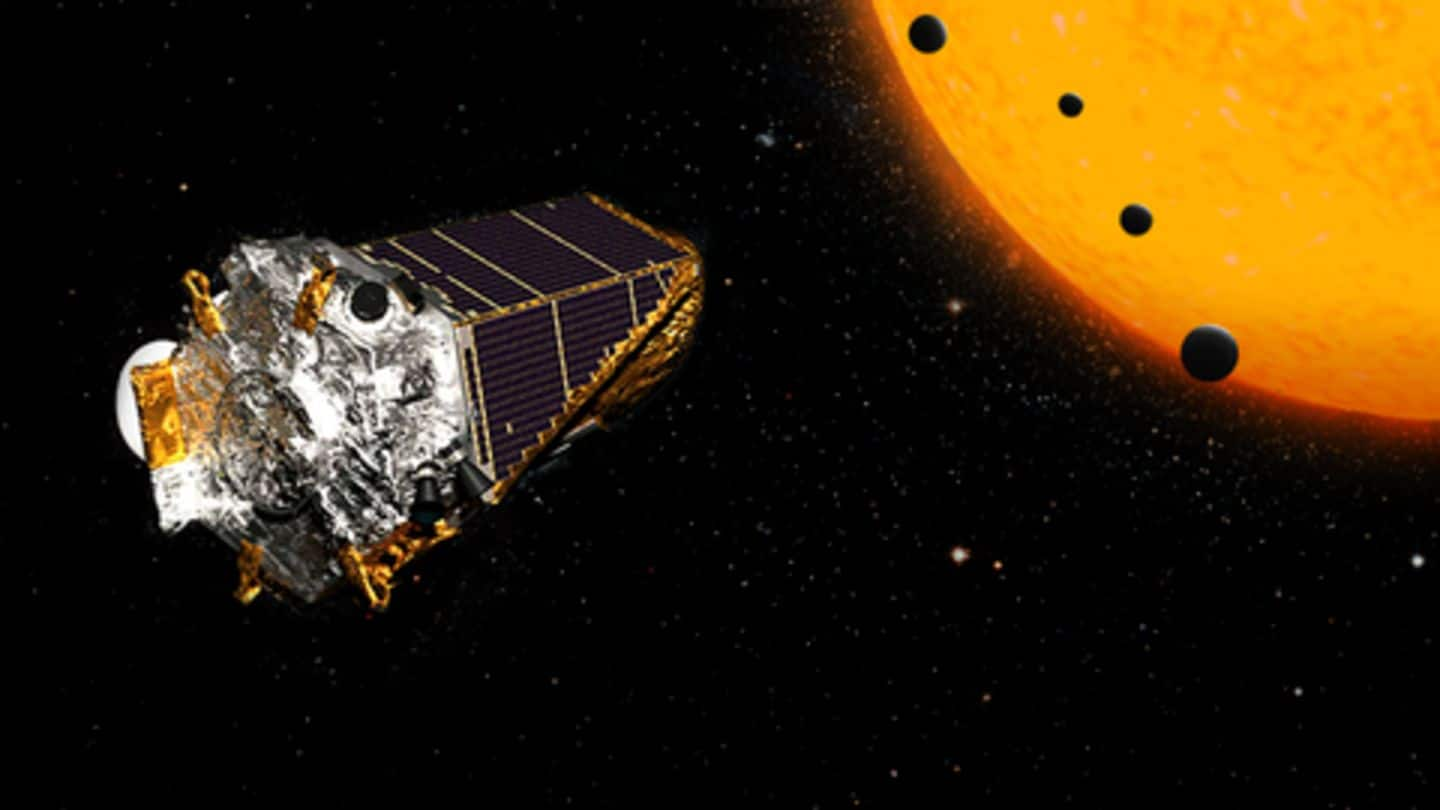
NASA bids 'goodnight' to the planet-hunting Kepler space telescope
What's the story
After almost a decade of service, NASA's planet-hunting Kepler space telescope has gone to sleep for good.
NASA had announced Kepler's retirement on October 30, 2018, and on November 15, the death anniversary of its namesake astronomer Johannes Kepler, a series of "goodnight" commands were sent to Kepler to shut down its transmitters, and disable all communications.
On Saturday, Kepler received its final commands.
Twitter Post
NASA bids farewell to Kepler
Farewell, planet hunter. Last night, the @NASAKepler space telescope received its final set of commands to disconnect communications with Earth. The “goodnight” commands were sent on the anniversary of the death of the mission’s namesake, Johannes Kepler: https://t.co/dhUCmKmvqW pic.twitter.com/TKkSk0EQ7C
— NASA Kepler and K2 (@NASAKepler) November 16, 2018
Service
Kepler found 70% of all alien worlds known to humanity
Kepler was launched on March 7, 2009 to find Earth-sized planets orbiting other stars as part of humanity's quest to find life beyond Earth.
Over the course of its nine-plus years of service, the sun-orbiting space telescope observed a whopping 530,506 stars, and detected a total of 2,682 confirmed exoplanets, accounting for 70% of all alien worlds known to humanity.
Difficulties
Despite equipment failure, Kepler continued to detect planets
In 2013, four years after its launch, the second of Kepler's orientation-maintaining reaction wheels failed, ending its original mission to find how common Earth-like planets were in the Milky Way.
However, after NASA figured out how to stabilize the observatory, the second phase of Kepler's mission, dubbed K2, began.
During this phase, Kepler identified 355 exoplanets.
Legacy
The most successful planet hunter in human history
However, midway through 2018, Kepler's reaction control system fuel got depleted, prompting NASA to announce its retirement in October.
While Kepler's observations have led to the discovery of over 2,500 exoplanets, at least 2,900 potential "candidates" now await confirmation by follow-up observation and analysis.
The now decommissioned Kepler is currently 151 million kilometers away from Earth, and will continue to float in space.
TESS
Kepler's successor, TESS, has big shoes to fill
With Kepler now decomissioned, NASA's Transiting Exoplanet Survey Satellite (TESS) is set to take up its mantle.
TESS was launched in April this year, on board a SpaceX Falcon 9 rocket, and captured its first light image in August.
Like Kepler, TESS, too, will search for exoplanets, albeit in an area 400 times larger than that covered by Kepler.
While TESS has big shoes to fill, scientists expect it to find a whopping 20,000 exoplanets.